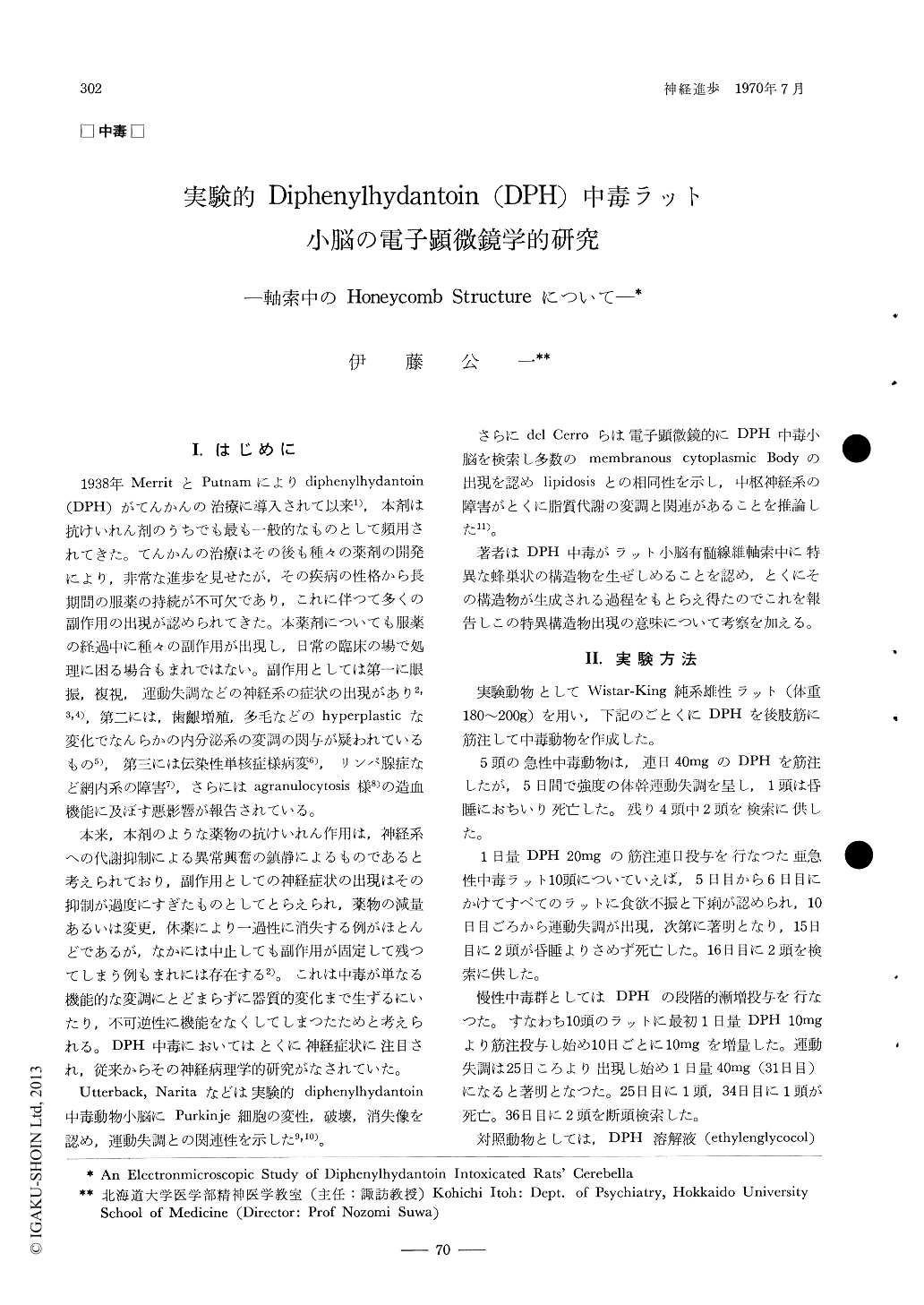Japanese
English
- 有料閲覧
- Abstract 文献概要
- 1ページ目 Look Inside
I.はじめに
1938年MerritとPutnamによりdiphenylhydantoin(DPH)がてんかんの治療に導入されて以来1),本剤は抗けいれん剤のうちでも最も一般的なものとして頻用されてきた。てんかんの治療はその後も種々の薬剤の開発により,非常な進歩を見せたが,その疾病の性格から長期間の服薬の持続が不可欠であり,これに伴つて多くの副作用の出現が認められてきた。本薬剤についても服薬の経過中に種々の副作用が出現し,日常の臨床の場で処理に困る場合もまれではない。副作用としては第一に眼振,複視,運動失調などの神経系の症状の出現があり2,3,4),第二には,歯齦増殖,多毛などのhyperplasticな変化でなんらかの内分泌系の変調の関与が疑われているもの5),第三には伝染性単核症様病変6),リソパ腺症など網内系の障害7),さらにはagranulocytosis様8)の造血機能に及ぼす悪影響が報告されている。
The cerebella of diphenylhydantoin intoxicated rats have been studied with the electron micro-scope.
In the granular cell layer of cerebellum, a developmental sequence ranging from vacuoles in the axoplasma to honeycomb structure was ob-served. At first, there appeared some vacuoles in the axoplasma having some relation with mito-chondria. Tubules were sprouted from the vacuo-les and constructed themselves to honeycomb structure.

Copyright © 1970, Igaku-Shoin Ltd. All rights reserved.


